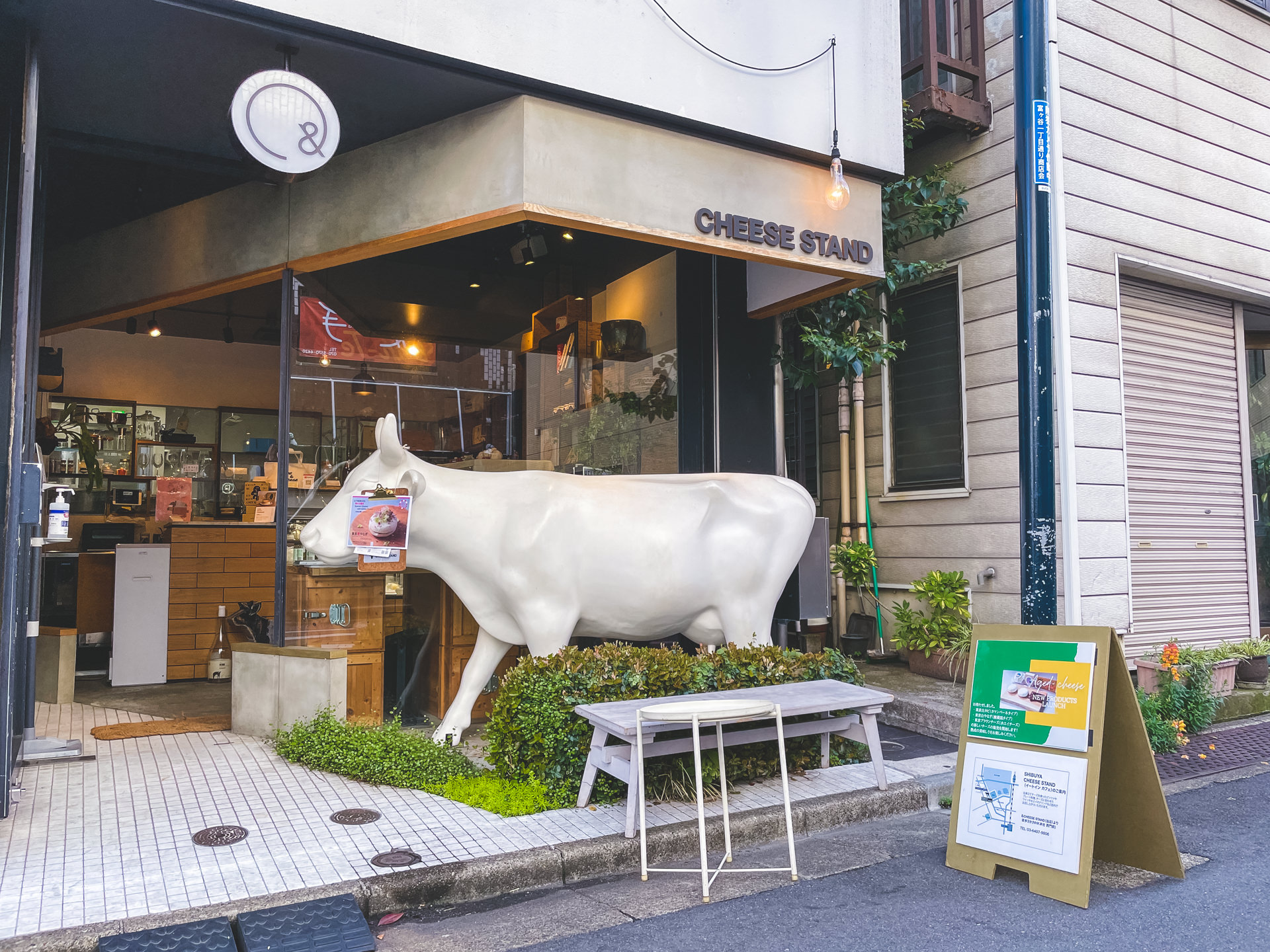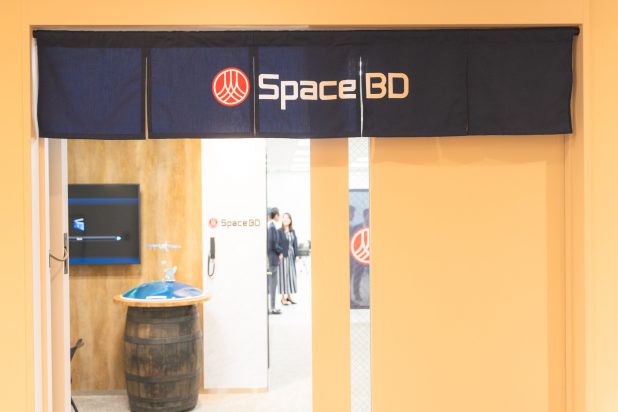Note: Names of organizations, offices, departments, etc. in the article are as of when the article was first published.
The Shibuya area of Tokyo, is a well known bustling area lined with all types of shops, restaurants and bars where the younger crowd walks the streets, but deep within this area is an area known as “Oku-Shibuya”.
In this area, away from the hustle and bustle of the busy shopping district, there is a cheese shop that produces and sells freshly made mozzarella and other cheeses.
It is called “& CHEESE STAND”.
The impetus for this interview came from a tweet on Twitter by the company’s president, Mr. Shinji Fujikawa. We noticed that “Ondotori” were being used during the cheese production process to check and manage temperature.
We immediately called them for an interview, and they agreed to talk with us, which led to this installment of Ondotori-ism.
Actually they have 3 shops: the “SHIBUYA CHEESE STAND” and “& CHEESE STAND” in the Shibuya Ward and the “CHEESE STAND LAB.” in the Setagaya Ward. This time we visited the “& CHEESE STAND”, a small production space and shop in Tomigaya, Shibuya Ward, not far from Yoyogi Park, to talk with them.
| Date | April 19, 2022 |
|---|---|
| Place | & CHEESE STAND |
| Models in Use | TR-71wb |
| Purpose | Temperature management during the cheese production process |
Q: I had an image that freshly made cheese could only be bought at a dairy farm. What made you decide to sell freshly made cheese here in Shibuya?
Mr. Fujikawa: “When I was a university student, I was backpacking and eventually ended up in Italy and went to Naples in the south. There were many mozzarella factories in the suburbs of Naples, and when I went to visit one without calling ahead, they gave me a taste of their freshly made cheese. The delicious taste left a strong impression on me, and I decided that someday I wanted to make cheese myself. Even if we made cheese at a dairy, it would be difficult to deliver that freshly-made taste, so we started here in Shibuya because we wanted people to be able to enjoy freshly made cheese right here in the city.”
――In fact, the week before my visit, I went to SHIBUYA CHEESE STAND (Kamiyamacho, Shibuya-ku, Tokyo) to buy “Fresh Mozzarella” and “Pull-apart Stringy Mozzarella” to enjoy at home . The juicy milkiness of “Fresh Mozzarella” really impressed me and I was amazed that I could get such fresh cheese in Shibuya!

Q: Tell us more about what policies you have in making cheese, what are you aiming for?
Mr. Fujikawa: “First and foremost, we try to preserve the milkiness of the product. In the case of mozzarella, we try to keep it “juicy”, and in the case of ricotta, we try to preserve the “sweetness” of the milk. During production, after adding lactic acid bacteria fermentation starts quickly, and since the bacteria are alive, changes continue to take place very rapidly. In order to control these changes, we need to keep a close eye on temperature, time and pH every day while we are making the cheeses. For example, if the water temperature is low on a certain day, we will want to raise the temperature a little. But sometimes that temperature may rise more than expected. This would then affect the pH, so we always need to be adjusting the time and devise ways to stay in control and manage the production on a daily basis.”
――So fine tuning is constantly necessary depending on the season and daily temperature changes.
Q: Where do you get your milk from?
Mr. Fujikawa: “We buy from a dairy in Kiyose City, Tokyo. There are about six dairies in that area. Actually, there are about 50 dairies in the Tokyo area with many of them located in the Nishitama area. However, due to aging and succession problems, the number of farms is on the decline.”
Q: Why do you source from Tokyo when there are dairy farms all over Japan?
Mr. Fujikawa: “The shorter the transport time for the milk, the better it is upon arrival. Milk is transported by tank lorry, and vibration during the journey causes the milk to ripple and foam. This increases the surface area and causes oxidation. To minimize these conditions, we purchase milk from a Tokyo-based dairy. Also, Tokyo milk has a higher milk fat content, which gives it a sweeter taste.”
――I was very surprised because I had never heard of milk production in Tokyo.
I had a strong image of fresh milk coming from large dairy farms like in Hokkaido, but upon hearing this, that image was overturned.

Q: About how much milk is delivered every day?
Mr. Fujikawa: “These days, the average volume is about 450 liters. We have a tanker truck deliver it to the front of “& CHEESE STAND” at 3:00 every morning. There is a hose connection at the front of the store to bring in the milk, and then we pump it up to the kitchen. Then, from between about 5:00 and 9:00, we begin fermentation and finally start kneading the cheese. While fermentation is going on, we prepare for packing and preparing aged cheeses. It depends on the amount of milk coming in, but production is usually finished around 11:00.
By the way, 1 liter of milk yields about 1.2 blocks of mozzarella. So, if we get 500 liters of milk, we can make about 600 blocks of mozzarella cheese, so the amount we can make in a day is quite limited.”
――Wow! From one whole liter of milk only a small amount of mozzarella cheese can be made.
We then asked him how he is making use of T&D data loggers.
Q: You tweeted on Twitter that you use our data loggers during pasteurization. Can you fill us in a little more about that?
Mr. Fujikawa: “The tanker trucks are cooled, and we have them deliver the raw milk every morning at about 5℃. The milk is then pasteurized at 63℃ for 30 minutes in accordance with the “Ministerial Ordinance on Milk and Milk products Concerning Compositional Standards, etc.(*) We keep a record of the process of raising the temperature to that level.”
(*) The Ministerial Ordinance on Milk and Milk products Concerning Compositional Standards, etc is an Ordinance from the Ministry of Health, Labour and Welfare based on the Food Sanitation Law that stipulates standards for ingredients, labeling, containers and packaging, and production methods for milk, dairy products, and foods made mainly from these products.

Q: How did you come to know about T&D data loggers?
Mr. Fujikawa: “I have the impression that many people in the cheese industry use T&D loggers. I first saw them when I was first opening in 2012 and I visited a cheese factory for a tour where they told me that your loggers were the thing to have. That was my introduction to them and I have been using them ever since. At the time, I was using an older model that was not equipped with Wi-Fi, so I used a USB cable to connect to my PC for saving data. Now I use the TR-71wb to manage temperature data with T&D WebStorage Service.”
――Thank you so much for using our products for such a long time!
Q: When measuring temperature, where do you position the sensor to take measurements?
Mr. Fujikawa: “We place the sensor in the middle of the cheese vat(*). Lactic acid bacteria die at about 63℃, so we lower the temperature to 40℃ by pulling water into the vat to cool it down, and record the temperature transition during that process.”
(*) Cheese vats are equipment used to pasteurize raw milk and perform production processes such as fermentation, curdling, cutting, and whey removal.
They are double walled, and the space between the outside and inside can be filled with cold or hot water as necessary to control the temperature according to the conditions.

Q: What is the importance of temperature during cheese production?
Mr. Fujikawa said, “When the temperature reaches 65℃, milk begins to break down and the milk will not solidify even if we add coagulant enzymes. Therefore, we are careful not to exceed that line of temperature. On the other hand, if the temperature during fermentation were to drop by even 1℃, that alone would weaken the fermentation process. During manufacturing one important process is the removal of whey. If fermentation does not fully occur, only water can be removed and the cheese becomes hard. As you can see, just a one degree temperature change can greatly affect the quality of the cheese, and we also have to always keep an eye on the room temperature during production, so it’s a real battle every day.”

Q: Finally, do you have any requests or suggestions for improving our data loggers?
Mr. Fujikawa: “I wish we could measure pH! Do you have a device that can measure and record pH?”
We don’t have any devices that measure pH. However, we offer another series of data loggers called the RTR500B series, which is different from the TR-71wb series you are now using. The RTR505B data logger is used in combination with a data collecting device and depending on the module you use it can measure “4-20mA”, “voltage”, and “pulse”. If your pH measuring instrument is equipped with an analog output, you can connect it to the logger to receive and record data. This series is also compatible with T&D WebStorage Service.
――Mr. Fujikawa nodded his head and listened to us with great interest while looking at the product catalog we had brought with us.
In Conclusion
We are very honored that our products are being used to help in the making of fresh cheese in Shibuya.
It was very interesting to visit the actual sites where our logger systems are being used and hear the real voices of the users. We learn so much from our users, such as what parts of the sensors get dirty and are difficult to clean and hear about things they would like to measure other than temperature and humidity.
T&D loggers have continually evolved in step with the changing times, and we will do our best to deliver products that are simple in design and easy to use.





